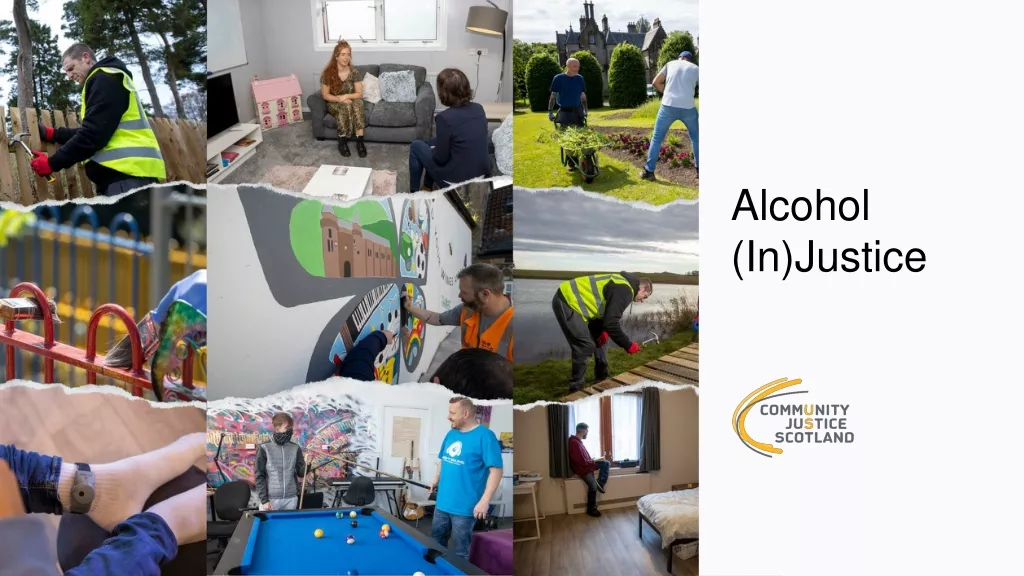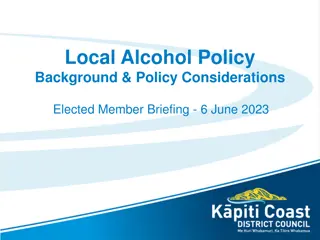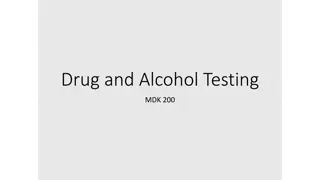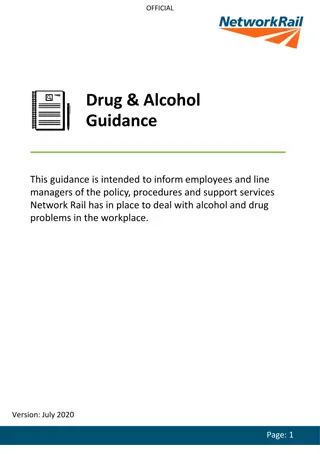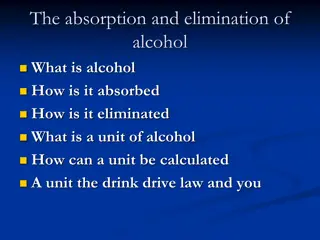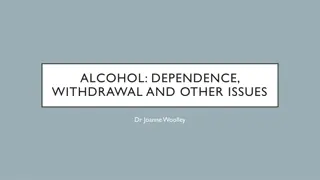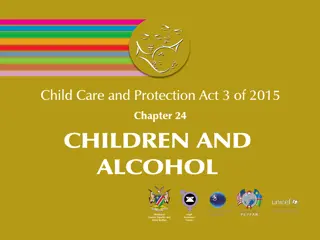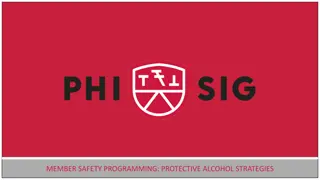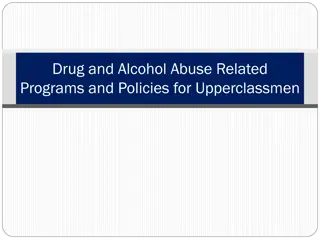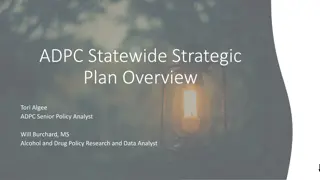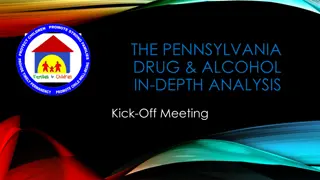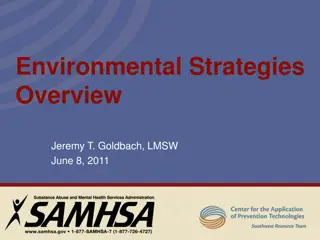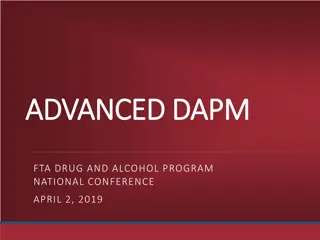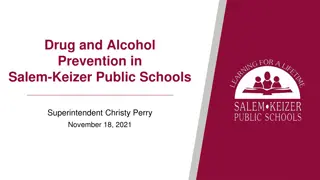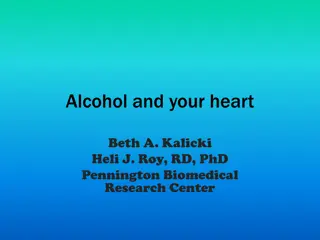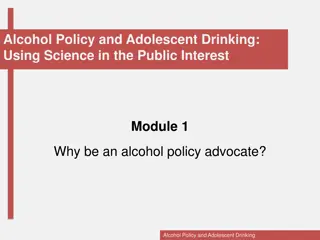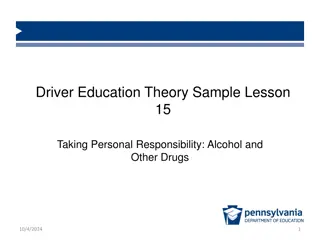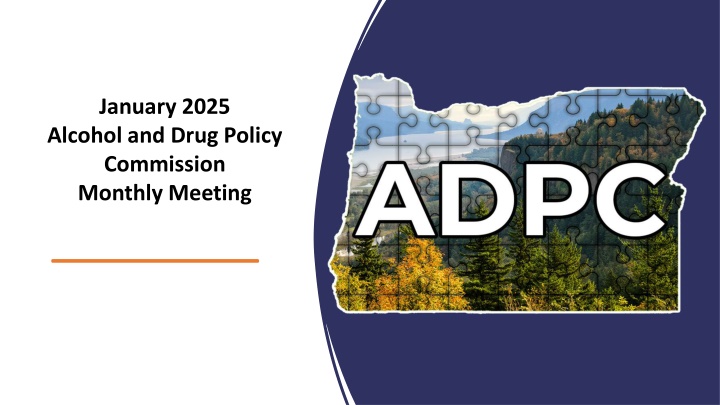
January 2025 Alcohol and Drug Policy Commission Monthly Meeting
The January 2025 meeting of the Alcohol and Drug Policy Commission discussed committee charters, membership approval, and committee updates. The Harm Reduction Committee and Recovery Committee welcomed new members, enhancing diversity and expertise in substance use disorder prevention and recovery services across diverse settings in Oregon.
Download Presentation

Please find below an Image/Link to download the presentation.
The content on the website is provided AS IS for your information and personal use only. It may not be sold, licensed, or shared on other websites without obtaining consent from the author. If you encounter any issues during the download, it is possible that the publisher has removed the file from their server.
You are allowed to download the files provided on this website for personal or commercial use, subject to the condition that they are used lawfully. All files are the property of their respective owners.
The content on the website is provided AS IS for your information and personal use only. It may not be sold, licensed, or shared on other websites without obtaining consent from the author.
E N D
Presentation Transcript
January 2025 Alcohol and Drug Policy Commission Monthly Meeting
Executive Session to consider ADPC Director 360 Review Consider Committee Charters and Membership (Vote) Today s Objectives Comprehensive Plan Development Updates and Discussion Committee Updates
Committee Charters and Committee Charters and Membership Membership Bylaws Article 3.2.1 Non-Commission members must be approved by Commission Resolution annually. Bylaws Article 3.4.1 Each Committee shall establish a Charter addressing the Purpose, Scope and Decision-making procedure for the Committee.
Committee Membership Committee Summary The Harm Reduction Committee recently welcomed 8 new members, bringing our membership up to 15. Furthering our geographic and demographic diversity, our new members expand our knowledge base and populations served to include at least 15 counties, treatment and harm reduction services in government and private settings, justice involved populations, tribal affiliations, LGBTQIA+ serving organizations, a spectrum of certifications (peer support, QMHA, CADC and more), with a core focus on people who use drugs, and people with lived and living experience. Harm Reduction The membership represents diverse points of view on primary prevention including lived and familial experience of substance use disorder, tribal and county public health and human services, community-based organizations, prevention professional associations, legal systems, youth recovery and treatment provision, prevention science, coordinated care organization leadership, early childhood and development research, K-12 and post-secondary education, human development, and culturally specific community program provision. The group represents Eastern, Southern, Coastal, and Central Oregon, the Mid-Willamette Valley, the Gorge, and the Tri-county Metropolitan area. Prevention The ADPC's Recovery Committee consists of 14 members from a range of organizations, backgrounds, and geographies. Represented are recovery community centers, including centers serving youth, the LGBTQIA2S+ community, and those providing culturally specific services. Members join from Southern Oregon, the Oregon Coast, the mid-Willamette Valley, and Portland. Most members have lived experience in recovery, helping to provide expertise on topics like recovery housing, peer services, recovery community centers, certification, culturally specific services, and youth services. Recovery At present, membership represents a wide diversity of settings and connections to the SUD care continuum that includes but is not limited to SUD researchers, Program leadership, CCO Staff, physicians, and provider organizations. Their combined expertise encompasses the entire continuum of care, from prevention to withdrawal management, from community based to carceral settings, with representation of culturally specific services and services across the lifespan. Vacant seats have been reserved with the intention of expanding geographic diversity of the committee over the coming year. Treatment
Committee Charters Committee Charters
2026 2026- -2030 Comprehensive Plan Update Comprehensive Plan Update 2030 Big Three Outcomes: Reduce prevalence of substance use disorders; Reduce substance use related deaths; and Reduce substance use related disparities and inequities. Access: Overarching theme for next 5 years if increasing access across continuum of care.
Commissioner Feedback Staff Response/Considerations Utilize the Recovery Oriented System of Care (ROSC) framework Adopt ROSC as basis for ADPC statewide strategy Utilize a culturally specific leadership body early and throughout planning process Convene Culturally Specific Leadership Table to meet throughout planning process Commissioner Commissioner Feedback & Feedback & Actions Actions Bring strategies to communities most impact by SUD early in the process Committees identify high level list of strategies(the WHAT not the HOW) by March Consider needs of individuals justice involved Leave no care access point behind, consider committee workgroups to address Leverage local leaders and grassroots connections of CBOs Shifted Facilitator conducted focus groups to additional CBO grants for community engagement
A Recovery A Recovery Oriented Oriented System of System of Care Care -is Consumer and Family-Driven -is Timely and Responsive -is Person-Centered -is Effective, Equitable, and Efficient -is Safe and Trustworthy -maximizes use of Natural Supports and Settings
Comprehensive Plan Timeline Comprehensive Plan Timeline January-September 2025 September- December 2024 October-November 2025 Community engagement (CBOs, Culturally Specific Providers, Commissioner conversations) Committee Prep Dashboard Development March 2025 Committee Strategies Identified Committee strategy, action, and measurement development Regional Town Halls Terms of plan begin July-September 2025 January-May 2025 January 2026
2020-25 Strategic Plan Summary and Summary of Assessments and Gaps Analyses All Commissioners and Committee Members Commissioner Commissioner Foundational Foundational Materials & Materials & Communications Communications Updated Website with individual committee pages Comprehensive Plan One Pager NEW Blog
The ADPC leverages a variety of state and national data resources to identify trends and make informed decisions. Some of these resources include: Behavioral Risk Factor Surveillance System (BRFSS) BRFSS is the largest telephone health survey in the world. It enables the Center for Disease Control and Prevention (CDC), state health departments, and other health agencies to monitor modifiable risk factors for chronic diseases and other leading causes of death. Alcohol Related Disease Impact (ARDI) ARDI is an online application that provides national and state estimates of alcohol-related health impacts, including deaths and years of potential life lost (YPLL). These estimates are calculated for 58 acute and chronic causes using alcohol-attributable fractions and are reported by age and sex. Oregon Student Health Survey The SHS is a comprehensive, school-based, anonymous and voluntary health survey of 6th, 8th and 11th graders conducted yearly. It is a key part of statewide efforts to help local schools and communities ensure that all Oregon youth are healthy and successful learners. State Unintentional Drug Overdose Reporting System (SUDORS) Fatal Drug Overdose Data on unintentional and undetermined intent drug overdose deaths from death certificates, medical examiner or coroner reports, and postmortem toxicology results. Hospital and Emergency Department Records Administrative discharge data from the Hospital Association of Oregon National Survey on Drug Use and Health (SAMHSA) The data provide estimates of substance use and mental illness at the national, state, and substate levels. NSDUH data also help to identify the extent of substance use and mental illness among different subgroups, estimate trends over time, and determine the need for treatment services. Death and Mortality Records Death certificate data available from the Oregon Center for Health Statistics
Committee Updates Committee Updates
ADPC Recommendations to Reduce Deaths Related to Overdose in 2024 Status Summary Recommendation Status Prevention: Hub, analysis of current programs and scale up OHA prevention OSPTRB funding counties & CBOs + supporting Certified Prevention Specialist Workforce Recovery: Recovery housing, Link peers and other professionals and funding for recovery community centers (RCCs) 24 Leg funding $18 mil for recovery housing + OSPTRB Oxford House funding Request to Interagency Council on Homelessness to address uniform guidelines and sustainable funding OSPTRB funding for new & existing RCCs Treatment: Increase Access to Medications for Opioid Use Disorder (MOUD) and Capital investment for facilities HB 4002 Report; OTP funding; Jail MOUD 24 Leg funding $85.4 million for facilities Res+ study shows the need + cost to fund GRB proposal for additional funding 25-27 Harm Reduction: Naloxone, drug checking and comprehensive syringe services OSPTRB funding for harm reduction clearinghouse GRB proposal for partial funding for 25-27 Youth: Form collaborative with SOCAC, funding for prevention and youth/family treatment 24 Leg funding for youth facility based care OSPTRB funding for prevention (above) OYAA formed

